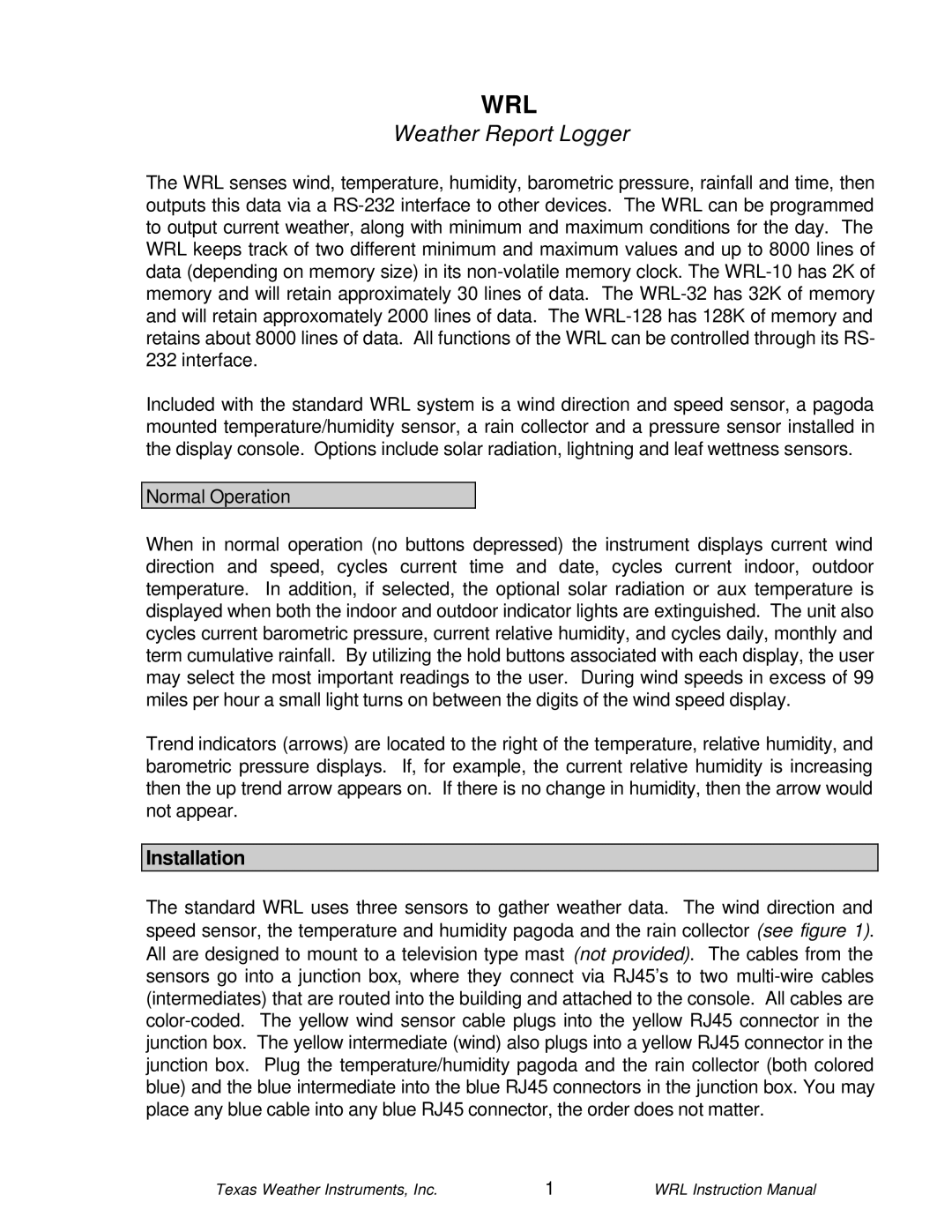
WRL
Weather Report Logger
The WRL senses wind, temperature, humidity, barometric pressure, rainfall and time, then outputs this data via a
Included with the standard WRL system is a wind direction and speed sensor, a pagoda mounted temperature/humidity sensor, a rain collector and a pressure sensor installed in the display console. Options include solar radiation, lightning and leaf wettness sensors.
Normal Operation
When in normal operation (no buttons depressed) the instrument displays current wind direction and speed, cycles current time and date, cycles current indoor, outdoor temperature. In addition, if selected, the optional solar radiation or aux temperature is displayed when both the indoor and outdoor indicator lights are extinguished. The unit also cycles current barometric pressure, current relative humidity, and cycles daily, monthly and term cumulative rainfall. By utilizing the hold buttons associated with each display, the user may select the most important readings to the user. During wind speeds in excess of 99 miles per hour a small light turns on between the digits of the wind speed display.
Trend indicators (arrows) are located to the right of the temperature, relative humidity, and barometric pressure displays. If, for example, the current relative humidity is increasing then the up trend arrow appears on. If there is no change in humidity, then the arrow would not appear.
Installation
The standard WRL uses three sensors to gather weather data. The wind direction and speed sensor, the temperature and humidity pagoda and the rain collector (see figure 1). All are designed to mount to a television type mast (not provided). The cables from the sensors go into a junction box, where they connect via RJ45’s to two
Texas Weather Instruments, Inc. | 1 | WRL Instruction Manual |
